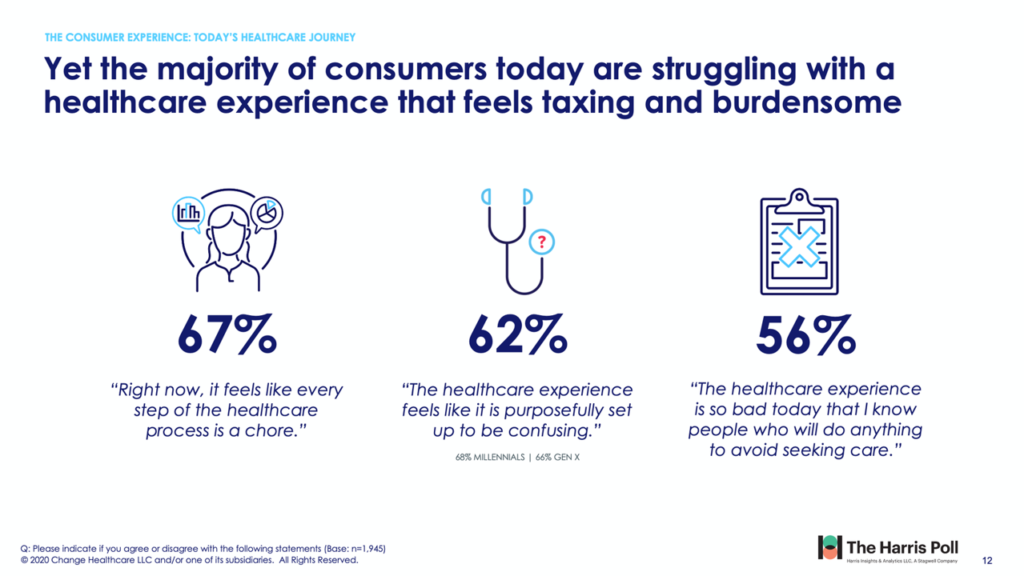 The phrase, “burden of health care,” has two usual meanings: one, to do with the massive chronic care burden, and the other, involving costs.
The phrase, “burden of health care,” has two usual meanings: one, to do with the massive chronic care burden, and the other, involving costs.The research was conducted among 1,945 U.S. adults in May 202 — in the throes of coronavirus pandemic.
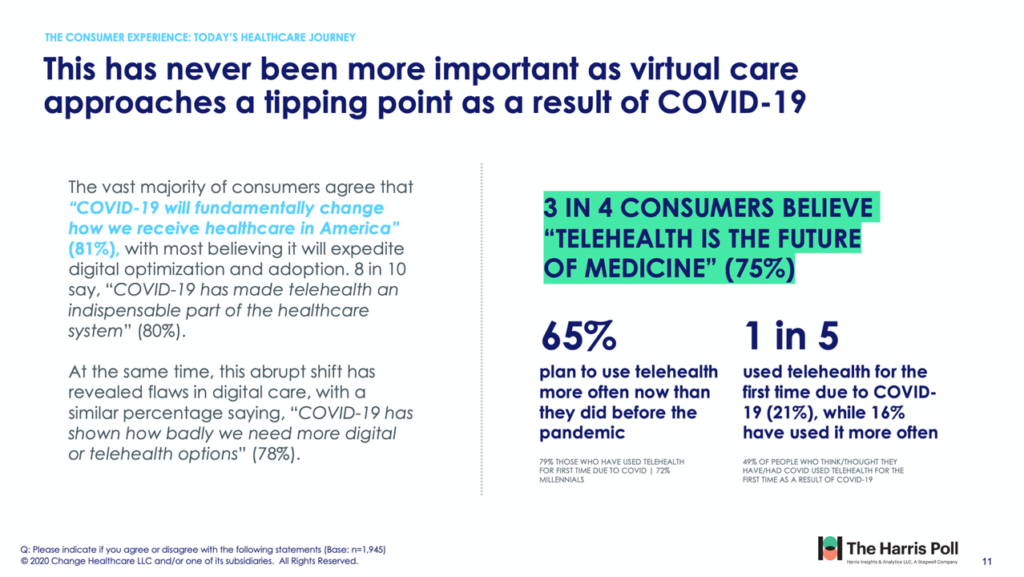 The timing of this study revealed a key finding related to the virus-crisis: that 4 in 5 Americans believe COVID-19 will fundamentally change how people will receive healthcare in the U.S.
The timing of this study revealed a key finding related to the virus-crisis: that 4 in 5 Americans believe COVID-19 will fundamentally change how people will receive healthcare in the U.S.
Specifically, most people foresee that telehealth will be a key delivery platform in the U.S. beyond the pandemic.
The pandemic revealed the need for virtual care delivery, the study report notes, finding 3 in 4 people believe that, “telehealth is the future of medicine.”
The costs borne by U.S. patients was a burden well-recognized before the pandemic. In the Age of COVID-19, costs continue to plague the patient experience, across the continuum of care.
Over one-half of patients avoided care because they were uncertain about the cost. Four in five people told Change Healthcare and Harris Poll that finding the cost of a treatment or appointment should be, “as easy to compare prices for healthcare as it is for other consumer services.”
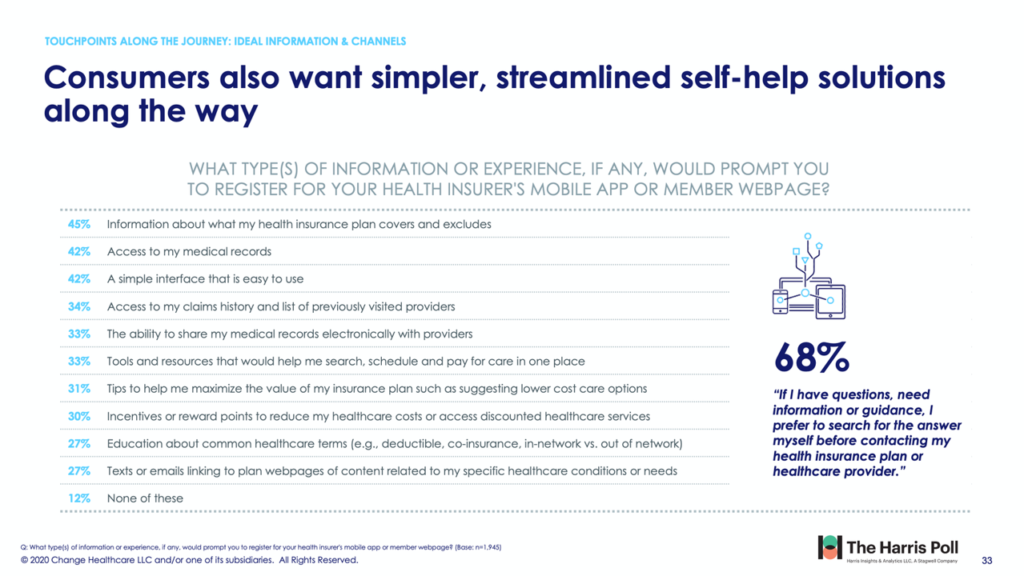 Health Populi’s Hot Points: This chart from the Change Healthcare – Harris Poll consumer experience study inventories various tools health consumers seek to streamline their health care, here couched in what a health plans’s mobile app or member portal could offer.
Health Populi’s Hot Points: This chart from the Change Healthcare – Harris Poll consumer experience study inventories various tools health consumers seek to streamline their health care, here couched in what a health plans’s mobile app or member portal could offer.
The most popular applications have to do with a plan’s coverage and costs, personal health records, and self-help for administrative tasks like making appointments.
One-third of people even liked the concept of earning incentives or reward points to reduce health care costs or discounted services.
I’m often nudged or critiqued for using the phrase, “health consumer.” Those who question the concept of a patient being a consumer say it’s nonsensical, not possible, or anathema.
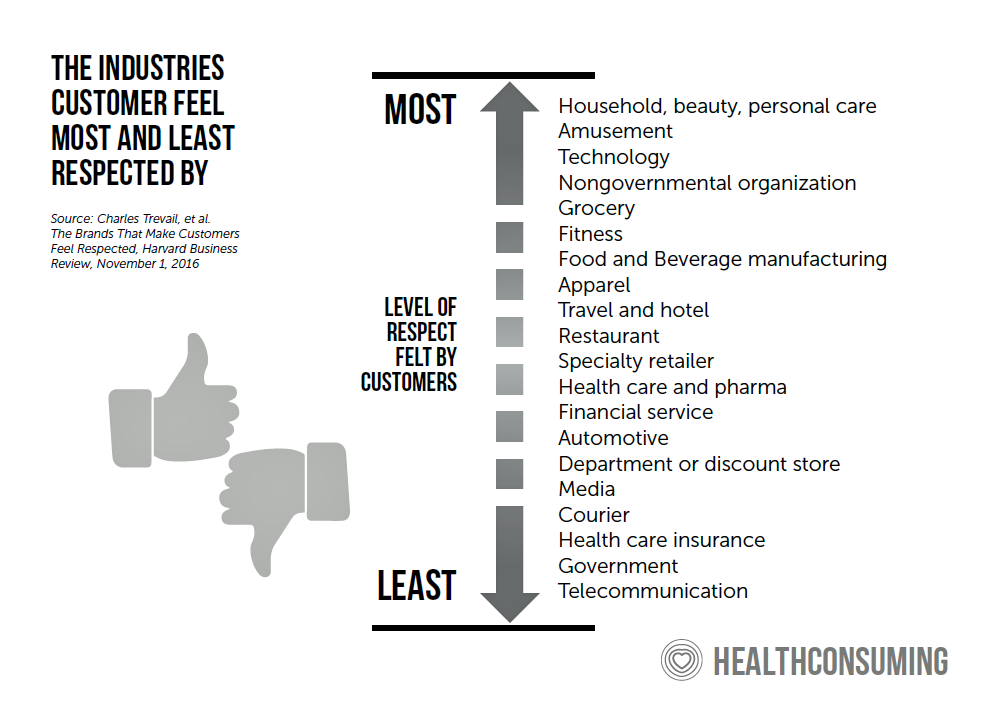 As long as U.S. health care embodies a burdensome, costly patient experience while demanding people spend about one-fifth of household budgets on health care, this chart speaks for the American health consumer in 2020 — even in the pandemic, the economic recession, the fear of going out and sending kids back to school. The heavy cost burden, the time-wasting and -waiting life-flows of getting and accessing appointments, and the administrative paperwork that is an outlier experience for people living digitized lives….calling people “health consumers” doesn’t mean their consumer experience is particularly enchanting.
As long as U.S. health care embodies a burdensome, costly patient experience while demanding people spend about one-fifth of household budgets on health care, this chart speaks for the American health consumer in 2020 — even in the pandemic, the economic recession, the fear of going out and sending kids back to school. The heavy cost burden, the time-wasting and -waiting life-flows of getting and accessing appointments, and the administrative paperwork that is an outlier experience for people living digitized lives….calling people “health consumers” doesn’t mean their consumer experience is particularly enchanting.
This last chart comes out of my book, HealthConsuming: From Health Consumer to Health Citizen. Note how little respect people feel from health care insurance companies, the government, and telecomms.
The pandemic has accelerated many trends in and beyond health care. One is Americans’ growing understanding of health care as a civil right. In the Age of COVID, we are all growing muscles as health citizens with need for health care access, WiFi connectivity, social connections and wearing face coverings to show the love to our fellow citizens.


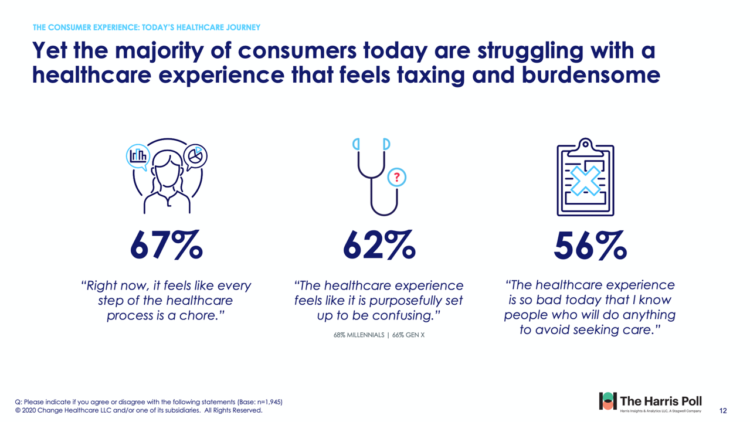


 Thank you FeedSpot for
Thank you FeedSpot for